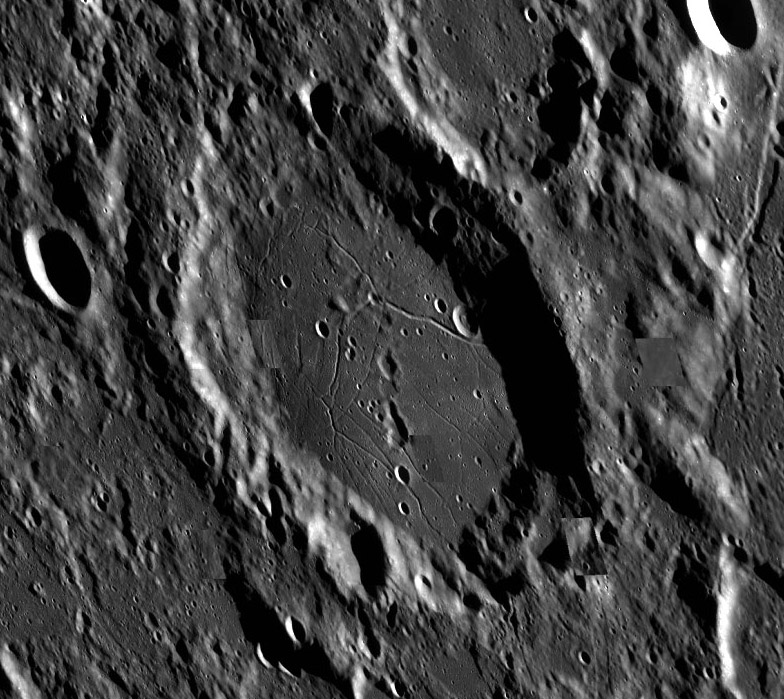March 4, 2011
Officially Mysterious
image snipped from [mailto: LRO-WAC Earthside Mosaic] (NASA/GSFC/Arizona State University)
Craters with rilles on their floors are generally of two types. In the first, the rille is a regional structure that cuts through the crater that happened to be in its way. In the second type the rilles are apparently related to uplift or subsidence of the crater floor and have elements that are roughly radial and concentric to the crater rim. Typically in the first type the rilles are linear troughs with wide floors and steep sides; Palmieri and Goclenius are good examples. The second type are floor-fractured craters such as Pitatus, Alphonsus and Gassendi, with narrow, curving rilles. Mersenius is different. There are 3 rilles that meet in a Y junction to the right of the off-center central peak. Near bottom left of the crater floor there are three narrow rilles that parallel each other, and 5 or 6 quasi-parallel rilles are across the bottom of the crater floor, all going in about the same direction. There has been evidence from Chuck Wood
Related Links
Rükl plate 51
COMMENTS?
Click on this icon File:PostIcon.jpg at the upper right to post a comment.




